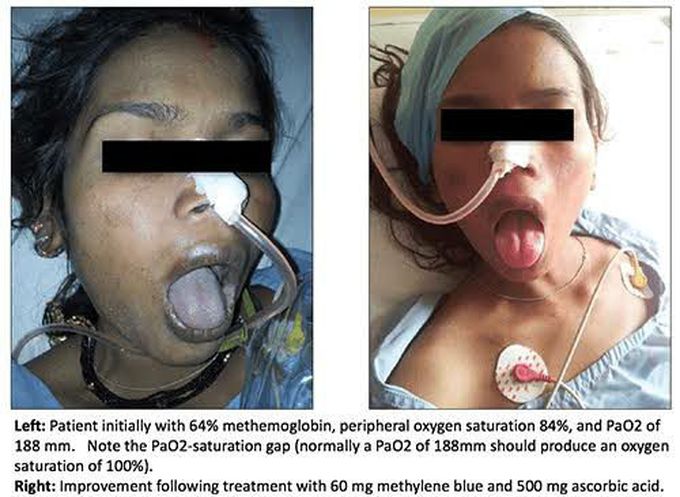


Chocolate Cyanosis
Methemoglobinemia is characterized by the presence of oxidized, ferric (Fe+3) form of hemoglobin in blood. This oxidation can be due to the action of certain drugs like nitrates or inherited defects. Mutations in the alpha or beta globin chains predispose to the formation of methemoglobin (HbM). A deficiency of enzyme NADH-cytochrome b5 reductase (NADH methemoglobin reductase), the enzyme responsible for reduction of Fe+3 to Fe+2, can also lead to accumulation of HbM. The presence of HbM is marked by 'chocolate cyanosis'- a typical brownish blue coloration of the skin and mucous membranes and the brown coloured blood. As the oxidized form of hemoglobin is unable to carry oxygen, patients present with symptoms related to hypoxia, like headache, anxiety, dyspnea, diziness and poor muscle coordination. Further elevation of HbM levels can lead to complications like seizures and arrhythmias. Treatment includes the administration of methylene blue which reduces Fe+3 and itself becomes oxidized. Ascorbic acid is also beneficial as it is an antioxidant and can act as a reducing agent. Image via: https://images.app.goo.gl/DcQHH7LyQ3E1kehcA

